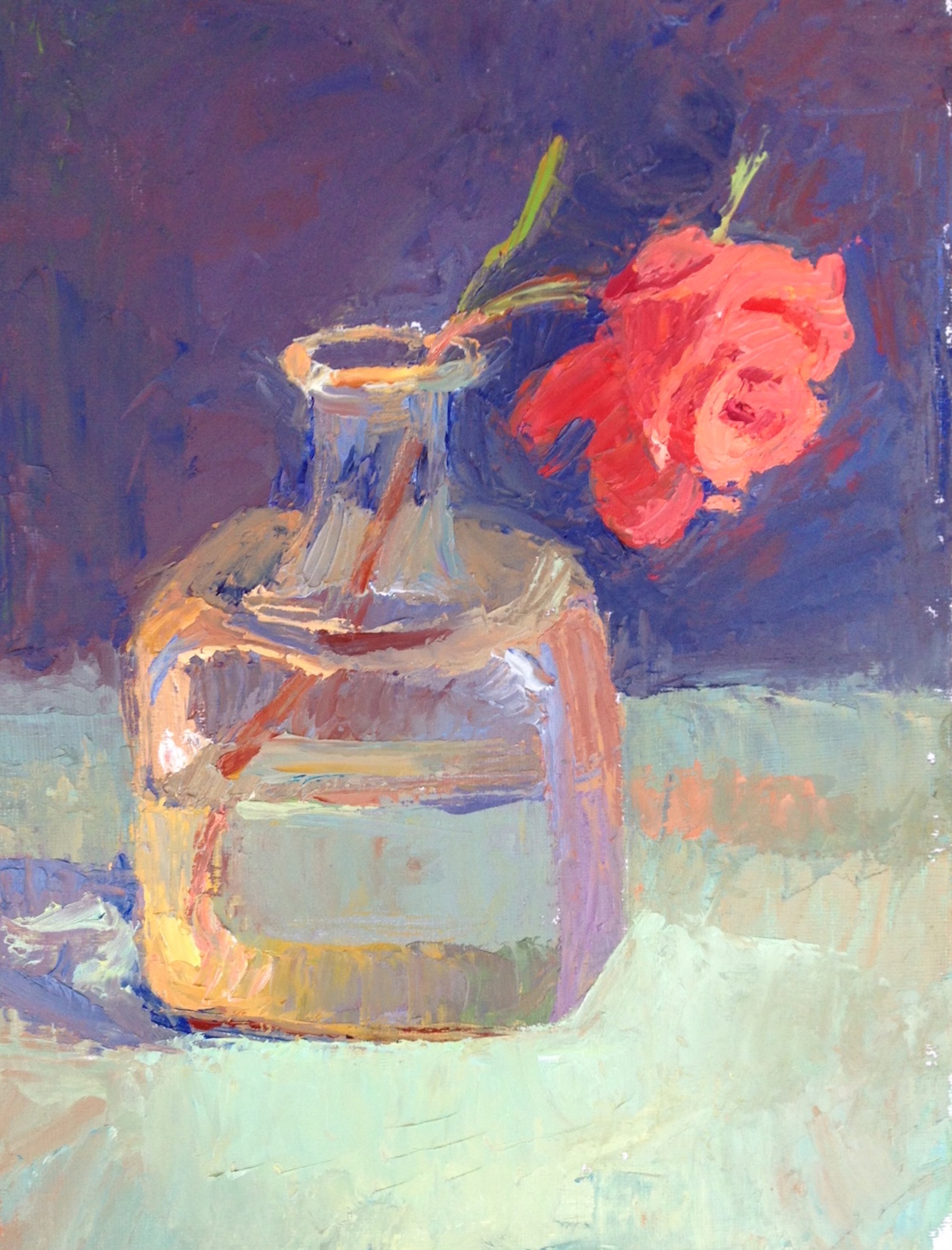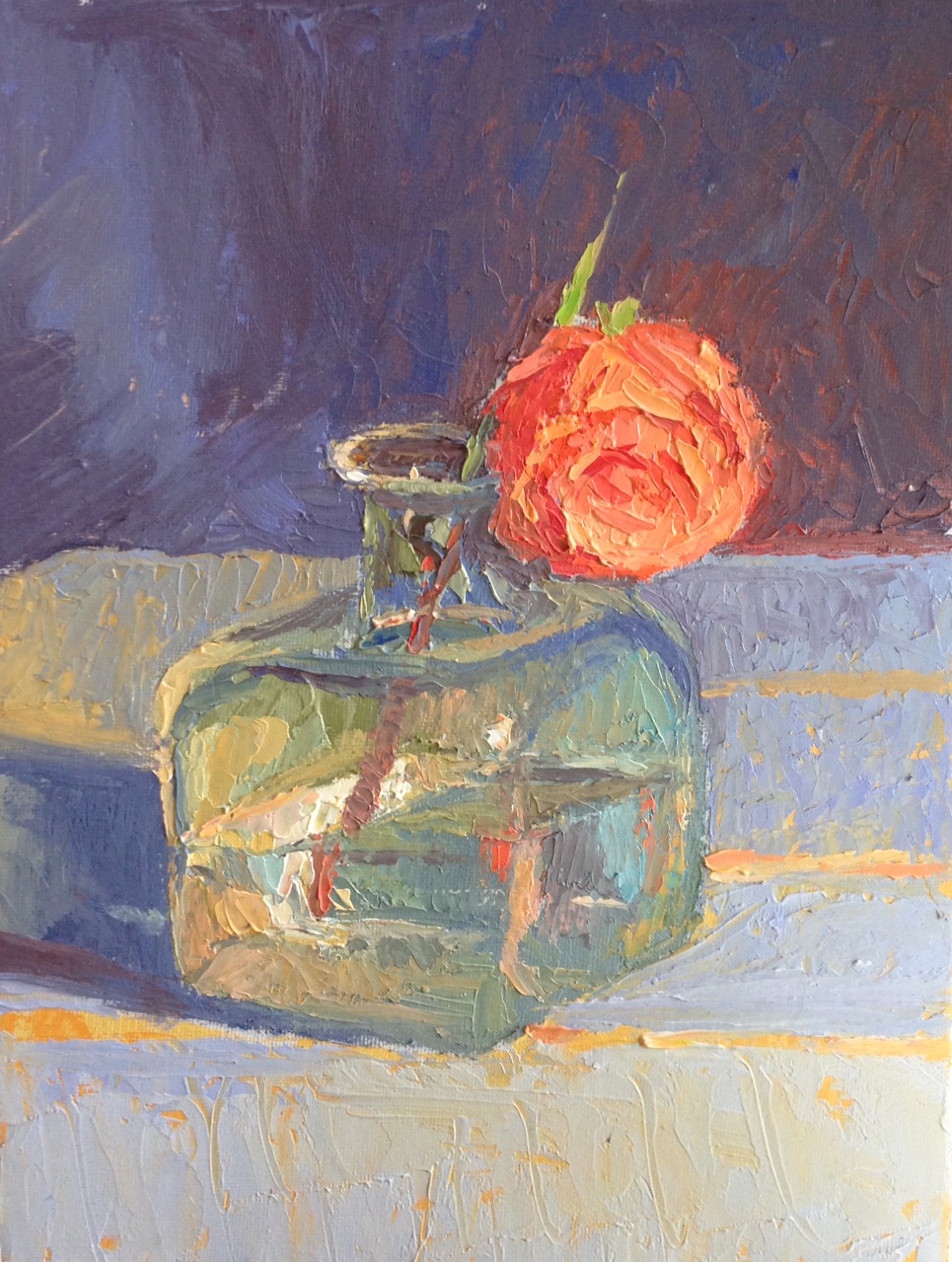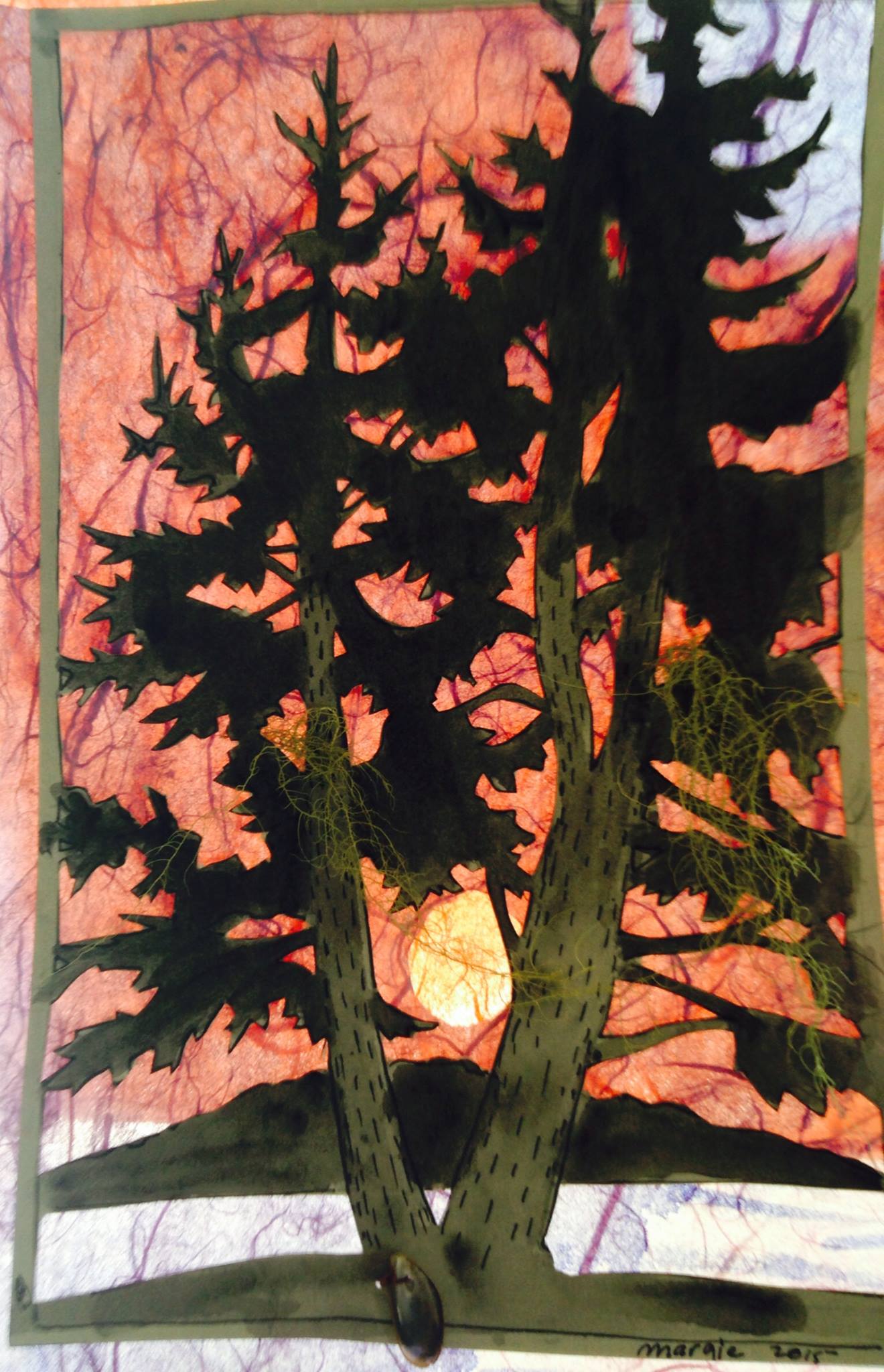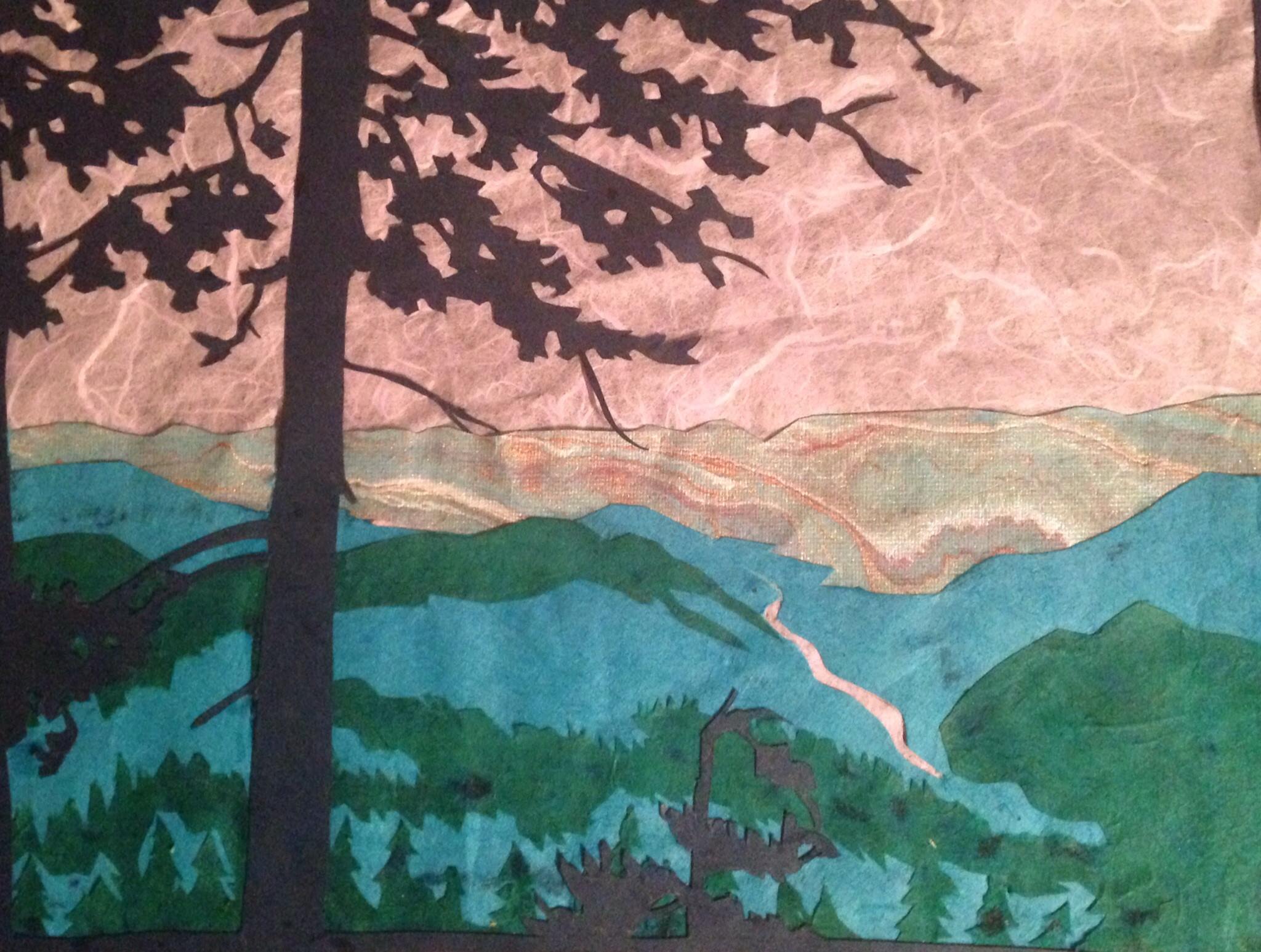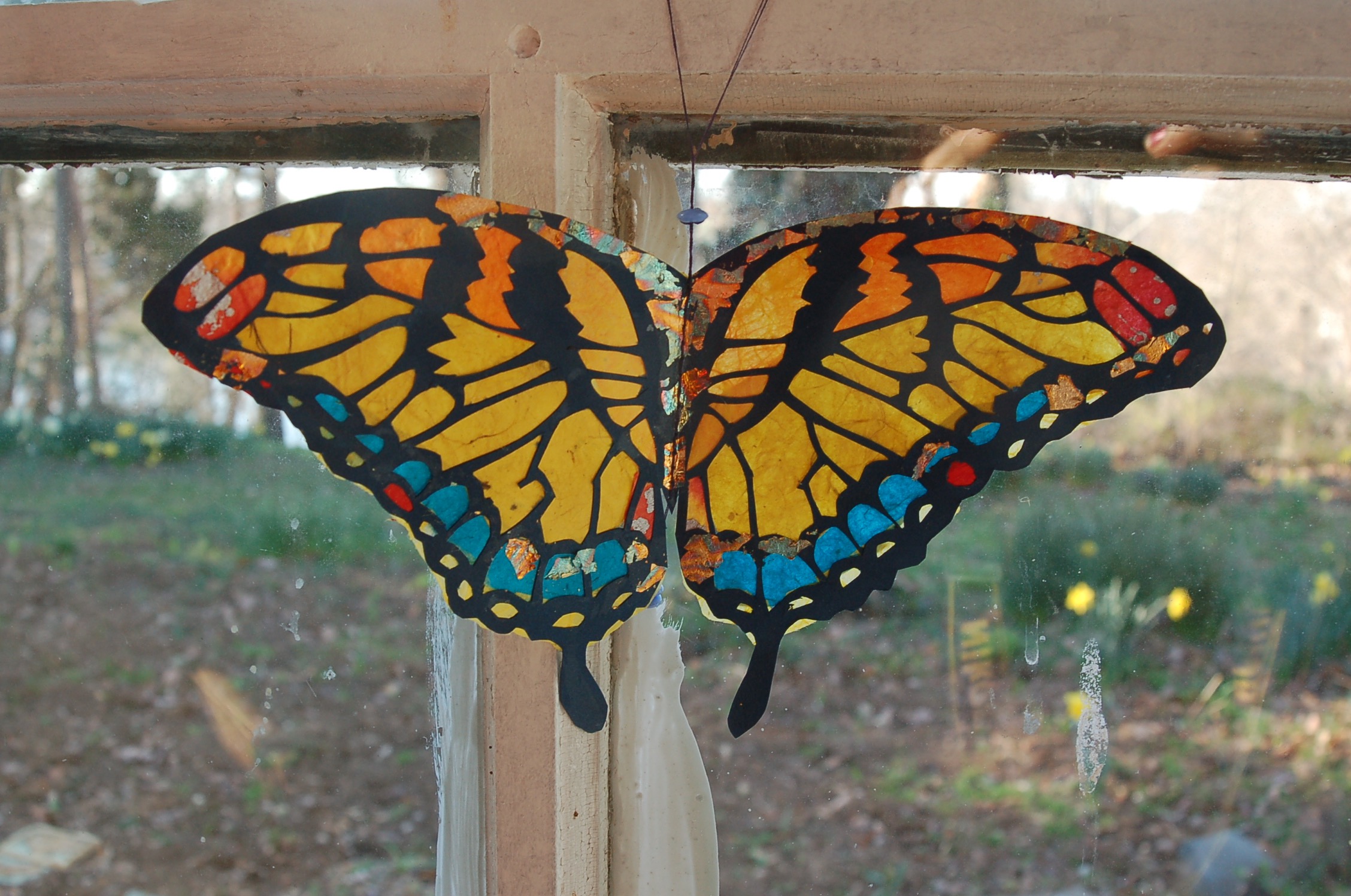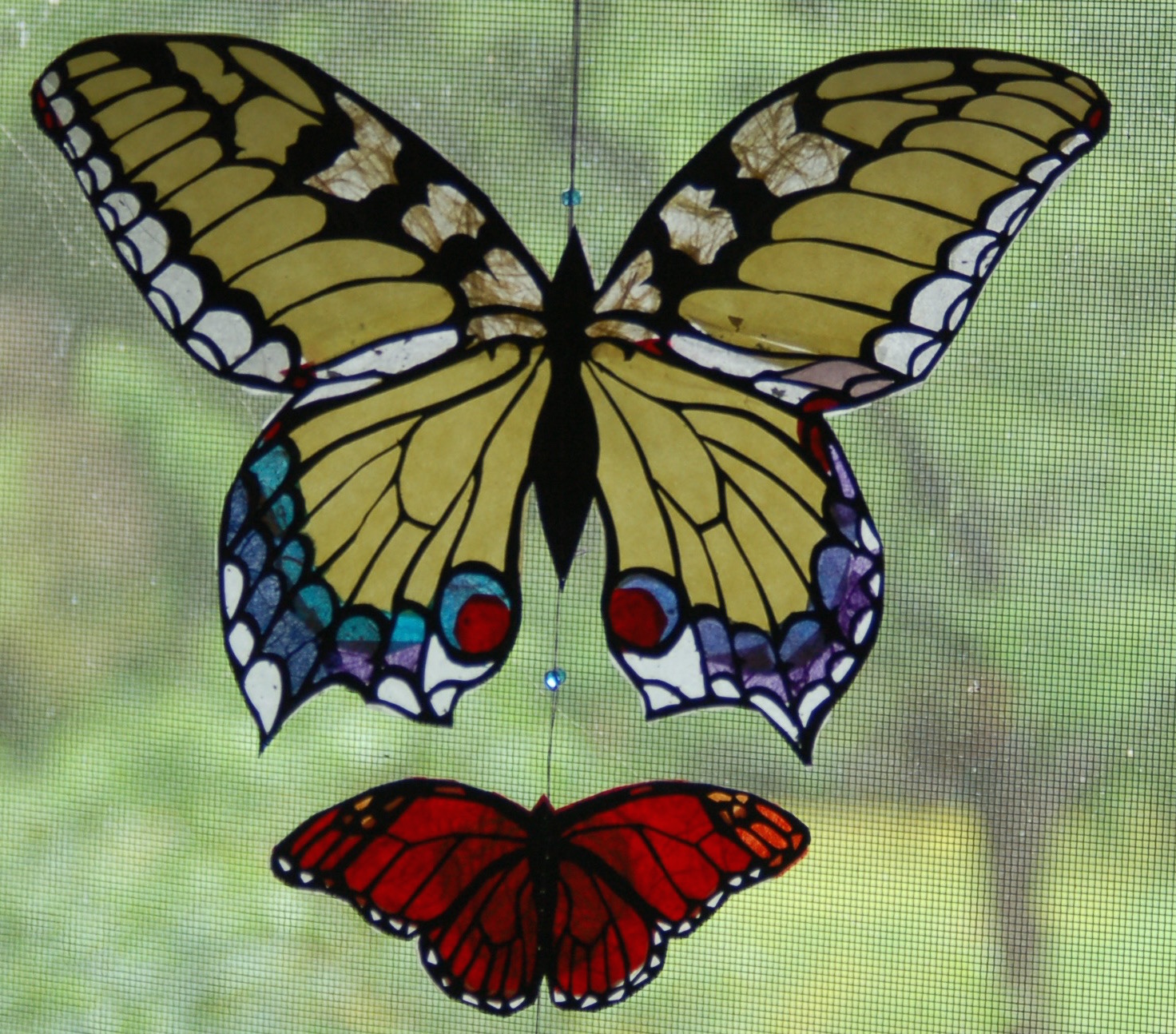My Dad, Lee Boynton, was my biggest inspiration in art. I grew up posing for him as his model, then started studying with him throughout my childhood and into my adult life. I painted in oil mainly; Dad painted in both watercolor and oil. Following the theories of color and light first developed by Claude Monet, the father of Impressionism, my Dad used a palette of colors based on the natural spectrum of light. He preferred to paint “en plain air” (French for out doors) and directly from life. Painting outdoors, directly from life, forces you to observe, as if in a mediative state, the very brilliance of a passing moment. It was wonderful to be able to share that passion with my father; to get excited and talk about art together; to go on painting excursions together; and to witness his passion for teaching his students.
In July 2014, I spread my wings and drove across country by myself. Before I left my mom said “pay special attention when you see a butterfly because that is a sign that God is there.” I didn’t have any plan and there were many times I doubted myself and felt lost, but everything always worked out for the best. When ever I felt afraid I would see a butterfly and felt comforted. I painted little landscape paintings along the way. I found art related jobs on craigslist before reaching the cities on my route. When I finally got to Oakland, California, I stayed with a childhood friend from Annapolis. I painted a picture of a pretty blue house with sunflowers around it and met the woman who lived there. This opened the door for me to live there for 8 months with her and her two children. I got a job at a local deli and struggled to make ends meet in the Bay Area.
On new years eve 2014, my father was diagnosed with stage 4 colon cancer. Some months later, I returned to Annapolis to help him.
All through the winter last year Dad and I painted together just the two of us in his studio. One of the paintings that I really liked that we did together was of a rose. He had found a rose blooming in December and we painted it together. Its interesting to look back at both of our paintings side by side and remember thatfragile pink of the rose. I can remember Dad’s suggestions when I look at this painting.
As my Dad’s sickness progressed, I found more and more pure joy in focusing on my art. I started making paper butterflies by cutting heavy card stock with an xacto blade, then gluing brilliant Asian papers behind the cut out wing shapes. When you hold them up to the light they look like stained glass. I made these paper butterflies to hang in the sunny window at the foot of Dad’s bed to comfort him - and to remind him that God was there. On April 24, 2016, my father spread his wings and went home to the Lord.
This year in celebration of my 30th birthday, I have decided to commit to being a full time artist. To give to myself what I love and to allow my art making to be an expression of my faith and my father’s influence on my heart. I continue to paint still life paintings and I continue to make paper butterflies. My future goal is to use these butterflies to collaborate with a scientist to help spread an understanding of the importance of habitat restoration.
Many folks say “its tough to be an artist, you have to do something else to support yourself” but I know that isn’t necessarily true. It depends on you, how committed you are to pursuing your vision. My Dad approached it just like anyone else would approach another career. He went to his studio from 9 - 5 every day to work, or painted outdoors. He created huge lovely paintings of watermen, ocean waves, or paintings of historic sites.
Growing up with my Dad I saw that the greatest thing about being an artist is that you can promote yourself, you can set your own boundaries. If you can imagine something as being possible, it is possible.
Unlike my father, I like to use many different materials and forms of art. I think its important to experiment — to keep your definition of yourself as an artist and what you “do” open as you learn. I can use one material and encounter some difficulties in executing an idea, and then use another material and find the answers. For example, I started out as an oil painter, painting landscapes with my Dad throughout my childhood. I found capturing the sense of distance as the rolling hills of the landscape became veiled in atmosphere to be very challenging. It wasn’t until I started using cut paper in collage that I could understand the layers of distance in the landscape.
For examples of my work visit: www.margieboynton.com


